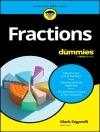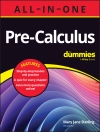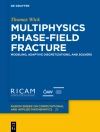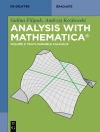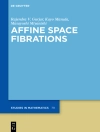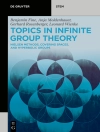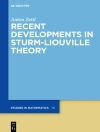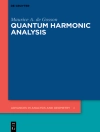This volume gathers together selected, peer-reviewed papers presented at the BIOMAT 2020 International Symposium, which was virtually held on November 1-6, 2020, with an organization staff based in Rio de Janeiro, Brazil. Topics covered in this volume include infection modeling, with an emphasis on different aspects of the COVID-19 and novel Coronavirus spread; a description of the effectiveness of quarantine measures via dynamic analysis of SLIR model; hemodynamic simulations in time-dependent domains; an optimal control model for the Ebola disease; and the co-existence of chaos and control in the context of biological models. Texts in agroforestry, economic development, and wastewater treatment processes complete this volume.
Held every year since 2001, the BIOMAT International Symposium gathers together, in a single conference, researchers from Mathematics, Physics, Biology, and affine fields to promote the interdisciplinary exchange of results, ideas and techniques, promoting truly international cooperation for problem discussion. The 20th edition of the BIOMAT International Symposium has received contributions by authors from 18 countries: Algeria, Brazil, Cameroon, Canada, Chile, China (Hong Kong), Colombia, Germany, Hungary, India, Italy, Morocco, Nigeria, Russia, Senegal, South Africa, USA, and Uzbekistan. Previous BIOMAT volumes with selected works from 2017, 2018, and 2019 were also published by Springer.
Spis treści
1- Mathematical Modelling of Macroalgae-borne Pathogen Transmission in Corals (Susmita Halder, Samares Pal, Joydeb Bhattacharyya).- 2- Oscillatory Behavior of a Delayed Ratio-Dependent Predator-Prey System with Michaelis-Menten Functional Response (Sándor Kovács, Szilvia György, Noémi Gyúró).- 3- Dynamical Analysis of Phytoplankton-Zooplankton Interaction Model by Using Deterministic and Stochastic Approach (Anal Chatterjee, Samares Pal).- 4- Predicting the COVID-19 Spread using Compartmental Model and Extreme Value Theory with Application to Egypt and Iraq (Mahmoud A. Ibrahim, Amenah Al-Najafi), Attila Dénes).- 5- Geometry of Fitness Surfaces and Dynamics of Replicator Systems (A.S. Bratus, A.S. Novozhilov, T. Yakushkina).- 6- In Host Dynamics of the Human Papillomavirus (HPV) in the Presence of Immune Response (Z. Chazuka, M. Moremedi, E. Rapoo).- 7- Global Properties and Optimal Control Strategies of a Generalized Ebola Virus Disease Model (Zineb El Rhoubari, Hajar Besbassi, Khalid Hattaf, Noura Yousfi).- 8- On Whole Graph Embedding Techniques (L. Maddalena, I. Manipur, M. Manzo, M.R. Guarracino).- 9- Semigroup Approaches of Cell Proliferation Models (Y. El Alaoui, L. Alaoui).- 10- Viability Analysis of Labor Force in an Agroforestry System (Ingrid M. Cholo Camargo, J. A. Amador Moncada, C. A. Peña Rincón, G. Olivart Tost).- 11- Modeling COVID-19 Considering Asymptomatic Cases and Avoided Contacts (Iulia Martina Bulai).- 13- The Jaccard Symbol and its Usefulness on the Derivation of Amino Acid Distributions in Protein Domain Families (R.P. Mondaini, S.C. de Albuquerque Neto).- 14- When Ideas Go Viral – Complex Bifurcations in a Two-Stage Transmission Model (Julian Heidecke, Maria Vittoria Barbarossa).- 15- Dynamic Analysis of SLIR Model describing the Effectiveness of Quarantine against the Spread of COVID-19 (Omar Khyar, Karam Allali).- 16- Non-FSI 3D Hemodynamic Simulations in Time-Dependent Domains (Y.V. Vassilevski, A.A. Danilov, T.K. Dobroserdova, A.V. Lozovskiy).- 17- Co-Existence of Chaos and Control in Generalized Lotka-Volterra Biological Model: A Comprehensive Analysis (Taqseer Khan, Harindri Chaudhary).- 18- Global Dynamics of a Model for Anaerobic Wastewater Treatment Process (S. Barua, A. Dénes).- 19- Spatiotemporal Dynamics of Fractional Hepatitis B Virus Infection Model with Humoral and Cellular Immunity (Moussa Bachraoui, Khalid Hattaf, Noura Yousfi).- 20- A 3D Fractional Step Computational Modeling of Nerve Impulse Transmission through an Axonal Membrane: Incorporating Calcium Buffer and Extrusion (H. Lefraich).- 21- COVID-19 Superspreading Events Network Analysis from Agent-Based Model with Mobility Restriction (Larissa L. Lima, A.P.F. Atman).- 22- Distinct Prognostic Values of BCL2 Anti-apoptotic members in lung cancer: An In silico Analysis (Pooja Mittal, Archana Singh, Indrakant Kumar Singh).- 23- Economic Development Process: A Compartmental Analysis of a Model with Two Delays (A.B. Ndione, A. Mendy, C.A. Onana).
O autorze
Rubem P. Mondaini is President of the BIOMAT Consortium/International Institute for Interdisciplinary Sciences and a Full Professor of Mathematical Biology and Biological Physics at the Federal University of Rio de Janeiro, Brazil. He holds a Ph D in Theoretical Physics from the Brazilian Centre for Physical Research, Brazil. His research activities abroad include a period as a Visiting Scientist at the International Centre for Theoretical Physics (ICTP), Trieste, Italy (1978) and as a Senior Postdoc at the Department of Mathematics of King’s College, University of London, UK (1986). He was also a Visiting Professor at the Centre of Physics of Condensed Matter, Lisbon, Portugal (1986) and at the Department of Chemical Engineering of Princeton University (2008). He has been the Chairman of the Annual BIOMAT Conferences since their inception during the BIOMAT 2001 Symposium in Rio de Janeiro, Brazil.


